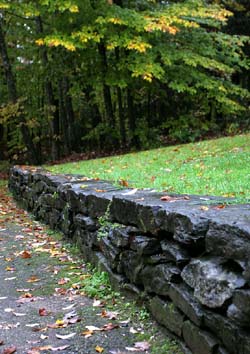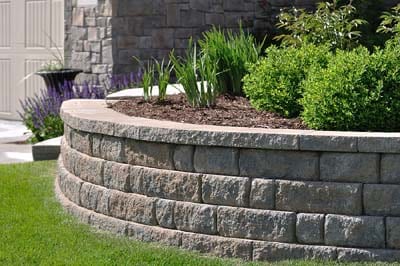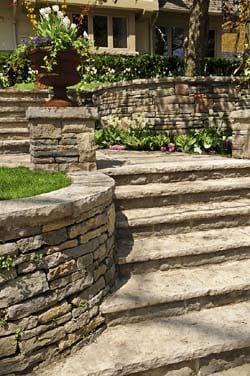
The most common purpose for the construction of a retaining wall is to control water flow, allow foundation drainage, and prevent soil erosion. Before a retaining wall is built there must be a land survey and a design / plan or it may create unexpected problems for the homeowner and / or his neighbors. A well planned retaining wall will assure that water flow and drainage from your property does not negatively affect your home or your neighbors’ homes. In addition, the retaining wall itself must be properly drained to reduce or eliminate any excessive hydrostatic pressure from the weight of the soil and water behind the wall.
Types of Retaining Walls
Retaining walls can be very simple and utilitarian structures. A relatively small, straight concrete retaining or landscaping wall can be built fairly easily and quickly at a modest price. However, most homeowners prefer to an element of elegance to their retaining wall by using different materials and designs. These walls can be built from poured concrete, concrete landscaping blocks, natural stone, small boulders or similar materials. In addition, homeowners also wish to incorporate some form of landscaping with their new retaining walls.
Common Types of Retaining Walls and their Purpose

Landscaping with Swimming Pool
Landscaping with outdoor Deck
Gardens
Terraces
Patio and Entertainment area
Walkways and Steps
Backyard Pond and/or Waterfall
Do You Need a Retaining Wall ? Or just Want One ?

Some areas, such as San Antonio and Austin, tend to be more hilly and often have a greater need for residential retaining walls because of soil erosion problems. Other areas, such as Houston and Dallas, tend to be flat but their need is to divert large volumes of rainwater away from the home to prevent flooding, excess soil saturation, and foundation damage. There are numerous materials and designs that are available to homeowners.
